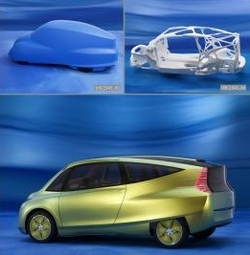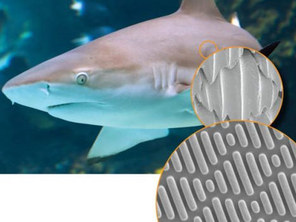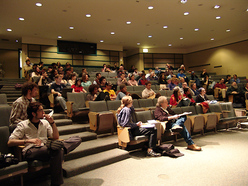|
by Nari Lee '17 In the midst of finals, we are all  Your computer is basically the center for sleep deprivation. [image via] Your computer is basically the center for sleep deprivation. [image via] Charles Czeisler of Harvard Med’s Division of Sleep Medicine warns that our usage of electric lights at night is disrupting our natural sleep patterns and contributing to higher risks of serious health problems. The artificial light coming from above that cubicle in the Sci Li or from your laptop in front is actually as good as or even better than the caffeine you may have had this morning when it comes to keeping you awake. [1]
0 Comments
by Denise Croote '16  Although seemingly static, bones are actually very dynamic structures that undergo constant growth. In fact, turnover is so frequent in bone cells that the skeletal system of a young healthy individual is completely replaced every four years (1). Not only are they dynamic, but bones are also exceedingly efficient when it comes to conserving materials. In the body, increasing material mass comes at a high metabolic cost, so bones confine themselves to areas where structural support is absolutely necessary. This “less is more” philosophy has caught the eye of the automobile industry, for eliminating redundant material when designing vehicles is not only cost-effective, but also environmentally friendly. A Review of The Pleasure of Finding Things Out by Matthew Lee '15
Even as Feynman grew up and learned more about the physical world, he would never forget his father’s lessons in observation and patience. Although his father was a salesman, not a career scientist, Feynman learned these principles of the scientific method and retained an insatiable curiosity for nature’s innumerable mysteries. These teachings would remain with him and inform his thinking and research, from cracking safes at Los Alamos to his mathematical formulations of quantum electrodynamics, for which he won the Nobel Prize in Physics in 1965 with Julian Schwinger and Sin-Itiro Tomonaga.
Feynman recounts the above story and many more in The Pleasure of Finding Things Out, a collection that includes lectures, interview snippets, articles, his 1974 Caltech commencement address, and his report as a member of the commission investigating the Challenger disaster. Except for two lectures on what would inspire nanotechnology, all of the pieces are accessible to people without a deep background in science. by Sonya Gurwitt '16 
Can you think of any other ways to combat climate change directly? [image via]
Global temperature increases in the coming decades will endanger coasts, small island nations, and agricultural yields, threatening the lives and livelihoods of people around the world. As a potential solution, some scientists have turned to geoengineering--using technology to engineer Earth’s climate. Geoengineering techniques aim to either reduce atmospheric CO2 concentration or incoming solar radiation. Many of these techniques are highly contested, and there has been little research into their feasibility or potential harms and benefits.
In a 2008 research paper (1), Alan Robock and colleagues attempt to shed light on the consequences of one form of geo-engineering, injecting aerosols into the stratosphere to cool the planet. Although the injections could substantially decrease temperatures over most of the globe, they might also disrupt rain patterns in certain areas and thereby affect food supplies for billions of people. Overall, their results and consequent analysis provide a number of significant worries about this type of geoengineering and suggest extreme caution when attempting an endeavor such as interfering with global climate. by Gordon Wade '15 
Shark skin has so little drag that Speedo has made swimsuits with materials designed to imitate shark skin. [image via]
Evolutionary solutions to natural problems are often more effective than designed solutions. Biomimicry allows us to adapt these evolutionary concepts into great engineered designs. Sharks, for example, have evolved toward extremely high efficiency in traveling through water, meaning reductions in energy usage and increases in speed. Their physical skin design lowers drag forces associated with movement and has shown great potential for application in human transportation.
Sharks are peculiar in that they live in an aquatic environment and never stop moving. Because of this, they must find effective ways to transport themselves through fluids. One adaptation lies in the small-scale structure of their skin. Under a microscope, the surface of shark skin is seen to comprise thousands of small teeth-like structures called denticles. These denticles manipulate fluid dynamics in order to decrease drag.  By Denise Croote '16 What do Zac Efron, Matt Bomer, and Megan Fox have in common with the baby depicted to the right? They all have vividly blue eyes and can thank the wondrous properties of Rayleigh scattering for it. The function of the iris is to limit the amount of light that passes through the lens to the retina. In order to do this, the iris is coated with a pigment called melanin. Depending on the concentration of the melanin present, the pigmentation of the iris in humans will vary from black to light brown (1). How then do some individuals have blue or green eyes if neither blue nor green pigments are present in the iris? By Katie Han '17
|


